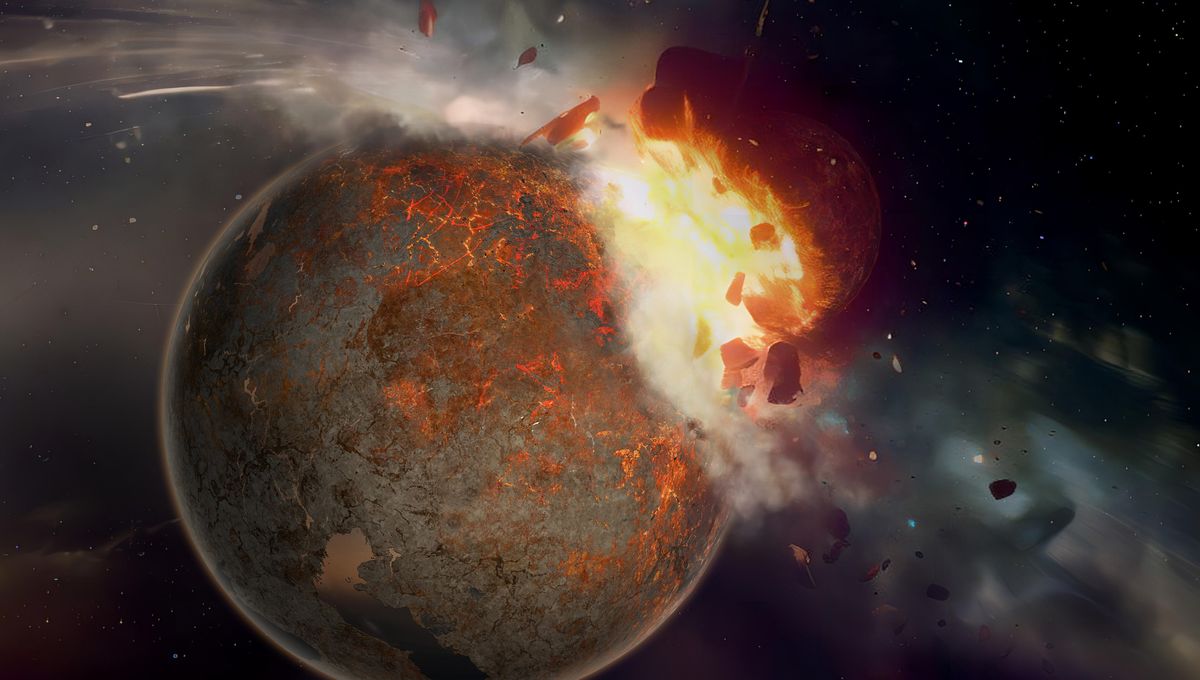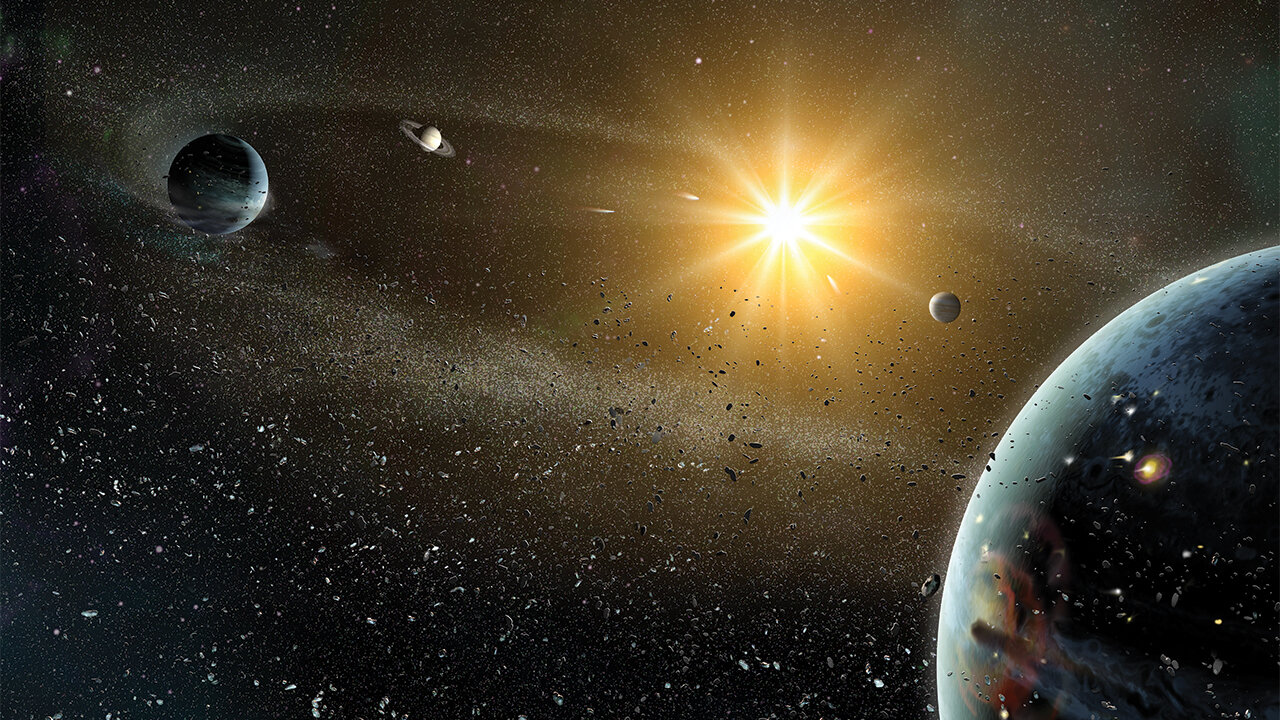Prepare to have your mind blown. New simulations have revealed mind-boggling details about the collision between Earth and Theia, the celestial body that eventually became our Moon. Forget what you thought you knew about this cosmic event – it turns out the impact was far more intense and transformative than previously believed.
Using an advanced technique called Meshless Finite Mass (MFM), scientists have uncovered astonishing insights into the collision. MFM is a powerful tool for accurately modeling turbulence and material mixing, and when applied to the Earth-Theia collision, it revealed a level of mixing between the two worlds that was previously unimaginable.
But don’t just take our word for it. Check out this mind-blowing simulation video:
“Previous research had it all wrong,” says Professor Deng Hongping of the Shanghai Astronomical Observatory. “We’ve been focusing too much on the debris disk and not enough on the impact’s effect on Earth itself.”
So what did the simulations reveal? Brace yourself. The collision resulted in a stark difference in the chemical composition of Earth’s upper and lower mantles. The lower mantle remained relatively untouched, with only a small amount of Theia’s material penetrating its depths. However, the upper mantle became a fascinating mix of Gaian and Theian material.
But here’s where it gets really mind-blowing. The Theian material in the lower mantle could be responsible for the formation of the enigmatic Large Low-Velocity Provinces (LLVPs) beneath the African and Pacific tectonic plates. This material, being richer in iron and heavier than the surrounding material, sank to the bottom, creating these mysterious structures.
And get this – this isn’t the first time researchers have proposed this mind-bending scenario. Multiple simulations and scenarios are converging on this idea, making it even more intriguing. Of course, more data is needed to fully understand the implications.
But wait, there’s more. The material from the deepest mantle and even the core can be brought to the surface by plumes. By studying this material, scientists can gather experimental evidence to support the simulation’s findings. And it doesn’t stop there – these findings could revolutionize our understanding of how other rocky planets form, and even provide insights into the formation and habitability of exoplanets beyond our Solar System.
Lead author Dr. Qian Yuan from the California Institute of Technology sums it up best: “Through precise analysis and refined models, we can uncover the entire history of the formation of the inner Solar System. This research even has implications for understanding the formation and habitability of exoplanets beyond our Solar System.”
Prepare to have your mind blown indeed.
The study is published in the journal Nature.








